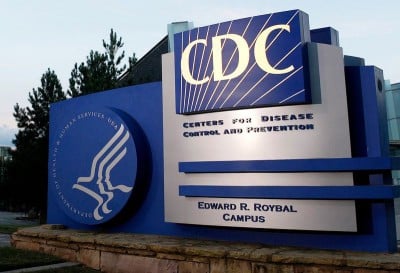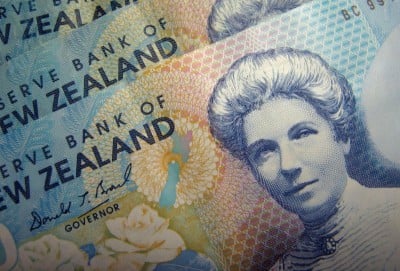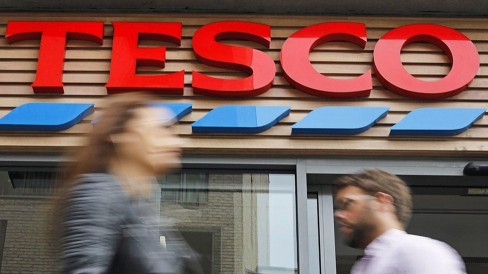
Tang Ming Tung / Getty Images
The U.S. inflation rate by year is the percentage of change in product and service prices from one year to the next, or "year-over-year."
The inflation rate responds to each phase of the business cycle. That's the natural rise and fall of economic growth that occurs over time. The cycle corresponds to the highs and lows of a nation's gross domestic product (GDP), which measures all goods and services produced in the country.
Key Takeaways
- The U.S. inflation rate by year reflects how much prices change year-over-year.
- Year-over-year inflation rates give a clearer picture of price changes than annual average inflation.
- The Federal Reserve uses monetary policy to achieve its target rate of 2% inflation.
- In 2022 in the wake of the COVID-19 pandemic, inflation reached 8.5%, its highest rate since 1982.
Business Cycle: Expansion and Peak
The business cycle runs in four phases. The first phase is the expansion phase. This is when economic growth is positive, with a healthy 2% rate of inflation. The Federal Reserve ("the Fed") considers this an acceptable rate of inflation. On August 27, 2020, the Fed announced that it would allow a target inflation rate of more than 2% if that will help ensure maximum employment. It still seeks a 2% inflation over time but is willing to allow higher rates if inflation has been low for a while.
As the economy expands past a 3% rate of growth, it can create an asset bubble. That's when the market value of an asset increases more rapidly than its underlying real value.
The second phase of the cycle is known as the "peak." This is the time when expansion ends and contraction begins.
Business Cycle: Contraction and Trough
As the market resists any higher prices, a decline begins. This is the beginning of the third, or contraction, phase. The growth rate turns negative. If it lasts long enough, it can create a recession.
During a recession, deflation can occur. That's a decrease in the prices of goods and services. It can often be more dangerous than inflation.
As the economy continues its downward trend, it reaches the lowest level possible for the circumstances. This trough is the fourth phase, where contraction ends and economic expansion begins. The rate of inflation begins to increase again, and the cycle repeats.
During recessions and troughs, the Fed uses monetary policy to control inflation, deflation, and disinflation.
The Effect of Monetary Policy
The Fed focuses on the core inflation rate, which excludes gas and food prices. These volatile prices change from month to month, hiding underlying inflation trends.
The Fed sets a target inflation rate of 2%. If the core rate rises much above that, the Fed will execute a contractionary monetary policy. The Fed can also lower the federal discount rate, which makes it cheaper to borrow money from the Fed itself. This is an attempt to increase demand and raise prices.
Other tools that the Fed uses are:
- Reserve requirements (the amount banks hold in reserves)
- Open market operations (buying or selling U.S. securities from member banks)
- Reserve interest (paying interest on excess reserves)
U.S. Inflation Rate History and Forecast
The best way to compare inflation rates is to use the end-of-year consumer price index (CPI), which creates an image of a specific point in time.
The table below compares the inflation rate (December end-of-year) with the fed funds rate, the phase of the business cycle, and the significant events influencing inflation. A more detailed forecast is in the U.S. Economic Outlook.
| Year | Inflation Rate YOY | Fed Funds Rate* | Business Cycle (GDP Growth) | Events Affecting Inflation |
|---|---|---|---|---|
| 1929 | 0.6% | NA | August peak | Market crash |
| 1930 | -6.4% | NA | Contraction (-8.5%) | Smoot-Hawley |
| 1931 | -9.3% | NA | Contraction (-6.4%) | Dust Bowl |
| 1932 | -10.3% | NA | Contraction (-12.9%) | Hoover tax hikes |
| 1933 | 0.8% | NA | Contraction ended in March (-1.2%) | FDR's New Deal |
| 1934 | 1.5% | NA | Expansion (10.8%) | U.S. debt rose |
| 1935 | 3.0% | NA | Expansion (8.9%) | Social Security |
| 1936 | 1.4% | NA | Expansion (12.9%) | FDR tax hikes |
| 1937 | 2.9% | NA | Expansion peaked in May (5.1%) | Depression resumes |
| 1938 | -2.8% | NA | Contraction ended in June (-3.3%) | Depression ended |
| 1939 | 0.0% | NA | Expansion (8.0% | Dust Bowl ended |
| 1940 | 0.7% | NA | Expansion (8.8%) | Defense increased |
| 1941 | 9.9% | NA | Expansion (17.7%) | Pearl Harbor |
| 1942 | 9.0% | NA | Expansion (18.9%) | Defense spending |
| 1943 | 3.0% | NA | Expansion (17.0%) | Defense spending |
| 1944 | 2.3% | NA | Expansion (8.0%) | Bretton Woods |
| 1945 | 2.2% | NA | Feb. peak, Oct. trough (-1.0%) | Truman ended WWII |
| 1946 | 18.1% | NA | Expansion (-11.6%) | Budget cuts |
| 1947 | 8.8% | NA | Expansion (-1.1%) | Cold War spending |
| 1948 | 3.0% | NA | Nov. peak (4.1%) | |
| 1949 | -2.1% | NA | Oct trough (-0.6%) | Fair Deal, NATO |
| 1950 | 5.9% | NA | Expansion (8.7%) | Korean War |
| 1951 | 6.0% | NA | Expansion (8.0%) | |
| 1952 | 0.8% | NA | Expansion (4.1%) | |
| 1953 | 0.7% | NA | July peak (4.7%) | Eisenhower ended Korean War |
| 1954 | -0.7% | 1.25% | May trough (-0.6%) | Dow returned to 1929 high |
| 1955 | 0.4% | 2.50% | Expansion (7.1%) | |
| 1956 | 3.0% | 3.00% | Expansion (2.1%) | |
| 1957 | 2.9% | 3.00% | Aug. peak (2.1%) | Recession |
| 1958 | 1.8% | 2.50% | April trough (-0.7%) | Recession ended |
| 1959 | 1.7% | 4.00% | Expansion (6.9%) | Fed raised rates |
| 1960 | 1.4% | 2.00% | April peak (2.6%) | Recession |
| 1961 | 0.7% | 2.25% | Feb. trough (2.6%) | JFK's deficit spending ended recession |
| 1962 | 1.3% | 3.00% | Expansion (6.1%) | |
| 1963 | 1.6% | 3.5% | Expansion (4.4%) | |
| 1964 | 1.0% | 3.75% | Expansion (5.8%) | LBJ Medicare, Medicaid |
| 1965 | 1.9% | 4.25% | Expansion (6.5%) | |
| 1966 | 3.5% | 5.50% | Expansion (6.6%) | Vietnam War |
| 1967 | 3.0% | 4.50% | Expansion (2.7%) | |
| 1968 | 4.7% | 6.00% | Expansion (4.9%) | Moon landing |
| 1969 | 6.2% | 9.00% | Dec. peak (3.1%) | Nixon took office |
| 1970 | 5.6% | 5.00% | Nov. trough (0.2%) | Recession |
| 1971 | 3.3% | 5.00% | Expansion (3.3%) | Wage-price controls |
| 1972 | 3.4% | 5.75% | Expansion (5.3%) | Stagflation |
| 1973 | 8.7% | 9.00% | Nov. peak (5.6%) | End of gold standard |
| 1974 | 12.3% | 8.00% | Contraction (-0.5%) | Watergate |
| 1975 | 6.9% | 4.75% | March trough (-0.2%) | Stop-gap monetary policy confused businesses and kept prices high |
| 1976 | 4.9% | 4.75% | Expansion (5.4%) | |
| 1977 | 6.7% | 6.50% | Expansion (4.6%) | |
| 1978 | 9.0% | 10.00% | Expansion (5.5%) | |
| 1979 | 13.3% | 12.00% | Expansion (3.2%) | |
| 1980 | 12.5% | 18.00% | Jan. peak (-0.3%) | Recession |
| 1981 | 8.9% | 12.00% | July trough (2.5%) | Reagan tax cut |
| 1982 | 3.8% | 8.50% | November (-1.8%) | Recession ended |
| 1983 | 3.8% | 9.25% | Expansion (4.6%) | Military spending |
| 1984 | 3.9% | 8.25% | Expansion (7.2%) | |
| 1985 | 3.8% | 7.75% | Expansion (4.2%) | |
| 1986 | 1.1% | 6.00% | Expansion (3.5%) | Tax cut |
| 1987 | 4.4% | 6.75% | Expansion (3.5%) | Black Monday crash |
| 1988 | 4.4% | 9.75% | Expansion (4.2%) | Fed raised rates |
| 1989 | 4.6% | 8.25% | Expansion (3.7%) | S&L Crisis |
| 1990 | 6.1% | 7.00% | July peak (1.9%) | Recession |
| 1991 | 3.1% | 4.00% | Mar trough (-0.1%) | Fed lowered rates |
| 1992 | 2.9% | 3.00% | Expansion (3.5%) | NAFTA drafted |
| 1993 | 2.7% | 3.00% | Expansion (2.8%) | Balanced Budget Act |
| 1994 | 2.7% | 5.50% | Expansion (4.0%) | |
| 1995 | 2.5% | 5.50% | Expansion (2.7%) | |
| 1996 | 3.3% | 5.25% | Expansion (3.8%) | Welfare reform |
| 1997 | 1.7% | 5.50% | Expansion (4.4%) | Fed raised rates |
| 1998 | 1.6% | 4.75% | Expansion (4.5%) | LTCM crisis |
| 1999 | 2.7% | 5.50% | Expansion (4.8%) | Glass-Steagall repealed |
| 2000 | 3.4% | 6.50% | Expansion (4.1%) | Tech bubble burst |
| 2001 | 1.6% | 1.75% | March peak, Nov. trough (1.0%) | Bush tax cut, 9/11 attacks |
| 2002 | 2.4% | 1.25% | Expansion (1.7%) | War on Terror |
| 2003 | 1.9% | 1.00% | Expansion (2.9%) | JGTRRA |
| 2004 | 3.3% | 2.25% | Expansion (3.8%) | |
| 2005 | 3.4% | 4.25% | Expansion (3.5%) | Katrina, Bankruptcy Act |
| 2006 | 2.5% | 5.25% | Expansion (2.9%) | |
| 2007 | 4.1% | 4.25% | Dec peak (1.9%) | Bank crisis |
| 2008 | 0.1% | 0.25% | Contraction (-0.1%) | Financial crisis |
| 2009 | 2.7% | 0.25% | June trough (-2.5%) | ARRA |
| 2010 | 1.5% | 0.25% | Expansion (2.6%) | ACA, Dodd-Frank Act |
| 2011 | 3.0% | 0.25% | Expansion (1.6%) | Debt ceiling crisis |
| 2012 | 1.7% | 0.25% | Expansion (2.2%) | |
| 2013 | 1.5% | 0.25% | Expansion (1.8%) | Government shutdown. Sequestration |
| 2014 | 0.8% | 0.25% | Expansion (2.5%) | QE ends |
| 2015 | 0.7% | 0.50% | Expansion (3.1%) | Deflation in oil and gas prices |
| 2016 | 2.1% | 0.75% | Expansion (1.7%) | |
| 2017 | 2.1% | 1.50% | Expansion (2.3%) | |
| 2018 | 1.9% | 2.50% | Expansion (3.0%) | |
| 2019 | 2.3% | 1.75% | Expansion (2.2%) | |
| 2020 | 1.4% | 0.25% | Contraction (-3.4%) | COVID-19 |
| 2021 | 7.0% | 0.25% | Expansion (5.9%) | COVID-19 |
| 2022 | 6.5% | 4.25% | Contraction (-1.6%) | |
| 2023 | 2.7% (est.) | 2.8% (est.) | Expansion (2.2%) | March 2022 projection |
| 2024 | 2.3% (est.) | 2.8% (est.) | Expansion (2.0%) | March 2022 projection |
Why the Inflation Rate Matters
The inflation rate demonstrates the health of a country's economy. It is a measurement tool used by a country's central bank, economists, and government officials to gauge whether action is needed to keep an economy healthy. That's when businesses are producing, consumers are spending, and supply and demand are as close to equilibrium as possible.
A healthy rate of inflation is good for both consumers and businesses. During deflation, consumers hold on to their cash because the goods will be cheaper tomorrow. Businesses lose money, cutting costs by reducing pay or employment. That happened during the subprime housing crisis.
In galloping inflation, consumers spend now before prices rise tomorrow. That artificially increases demand. Businesses raise prices because they can, as inflation spirals out of control.
When inflation is steady, at around 2%, the economy is more or less as stable as it can get. Consumers are buying what businesses are selling.
Frequently Asked Questions (FAQs)
How is inflation measured?
There are several ways to measure inflation, but the U.S. Bureau of Labor Statistics uses the consumer price index. The CPI aggregates price data from 23,000 businesses and 80,000 consumer goods to determine how much prices have changed in a given period of time. If the CPI rises by 3% year over year, for example, then the inflation rate is 3%. The Fed, on the other hand, relies on the price index for personal consumption expenditures (PCE). This index gives more weight to items such as healthcare costs.
What is the highest inflation rate in U.S. history?
Since the introduction of the CPI in 1913, the highest rate of annual inflation in the U.S. was 17.8% in 1917. The 1970s saw the longest period of sustained high inflation rates.
How do you hedge against inflation?
Because inflation causes money to lose value over time, hedging against it is an important part of any sound investing strategy. Investors use a diversified portfolio with a variety of asset types to offset inflation and ensure that the overall growth of their portfolio outpaces it.






